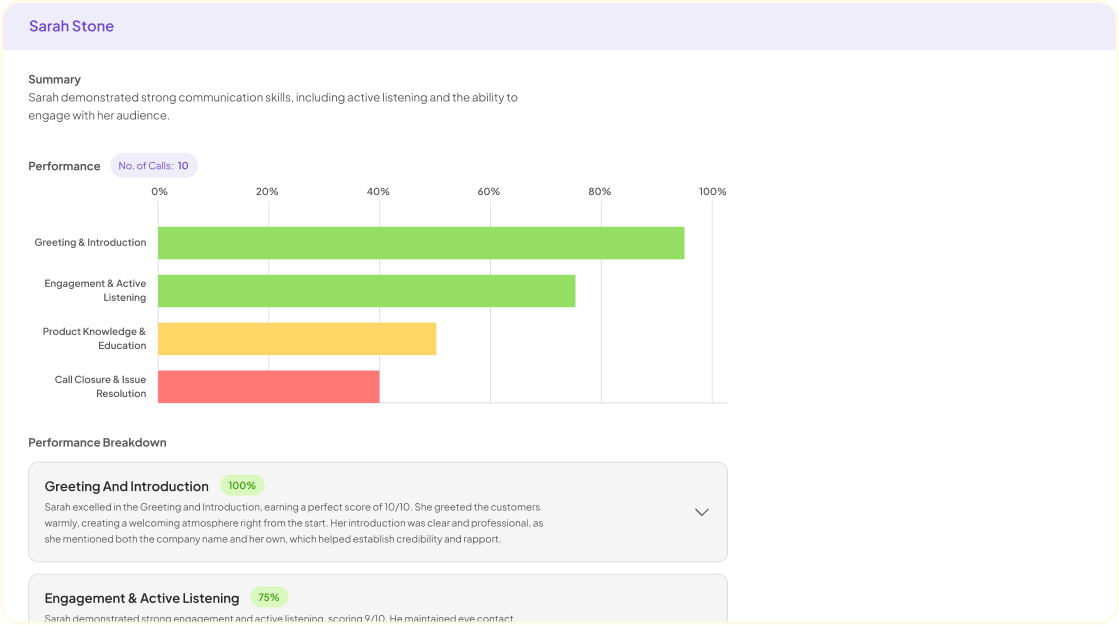
The ability to efficiently generate automatic transcription of audio and video content has become increasingly valuable.
Whether you’re a researcher, journalist, podcaster, or content creator, having accurate transcripts can streamline your workflow, enhance accessibility, and unlock new opportunities for analysis and repurposing. Transcription, however, can be a time-consuming and labor-intensive task, especially when dealing with large volumes of content for market research.
This is where automatic transcription with AI tools comes into play, offering a game-changing solution that can save you countless hours while ensuring accuracy and efficiency.
In this comprehensive guide, we’ll explore how to automate transcription, how to choose the right tools for transcription, the best AI transcription tools in the market, the benefits of embracing automated transcription and provide you with challenges you might face with automated transcription with AI Tools.
What is Automatic Transcription
Automatic transcription is the process of converting audio or video content into written text format using advanced speech recognition and natural language processing (NLP) technologies. AI-powered transcription tools like Insight7 leverage machine learning algorithms to accurately capture spoken words, punctuation, and even speaker identification, making it easier to generate high-quality transcripts quickly and efficiently.
Step-by-Step Guide to Generating Automatic Transcriptions
- Prepare Your Audio/Video Files
Ensure your files are in a compatible format (MP3, WAV, MP4). Check the tool’s documentation for specific requirements to avoid compatibility issues. - Select an AI Transcription Tool
Choose a reliable AI transcription tool such as Insight7. Your choice affects the quality and efficiency of the transcription process. Consider factors like accuracy, language support, and user experience. - Upload or Import Your Files
Navigate to your chosen tool’s interface and upload your files. Some tools offer options to select the language or provide additional context for better accuracy. - Configure Transcription Settings
Customize settings based on your needs. This may include enabling speaker identification, setting profanity filters, or adjusting accuracy levels. Proper configuration ensures better results. - Initiate the Transcription Process
Start the transcription. Most AI tools, including Insight7, provide a straightforward interface to begin the process. The duration may vary based on file length and complexity. - Review and Edit the Transcript
Once the transcription is complete, review it carefully. Look for errors or misinterpretations and make necessary corrections. AI tools may not be perfect, so manual review is crucial. - Utilize Editing and Collaboration Tools
Many tools offer features for editing and collaboration. Use built-in editing tools to make adjustments, add formatting, or insert timestamps. Collaborative features can streamline the review process. - Export and Share the Transcript
After finalizing the transcript, export it in the format you need, such as plain text, Word, PDF, or subtitle files. Choose the format that best suits your purposes.
How to Choose the Right AI Automatic Transcription Tool
Selecting the right tool involves evaluating several factors:
- Accuracy
Look for tools with high accuracy rates, capable of handling different audio qualities, accents, and languages. Accuracy is crucial for reliable transcripts. - Supported Languages
Ensure the tool supports the languages you need, including the ability to handle multilingual content within a single file. - Customization and Adaptation
Some tools allow customization of vocabularies and language models. This is useful for technical terms or industry-specific jargon. - Integration and Compatibility
Choose a tool that integrates seamlessly with your existing workflow and software. Consider tools with APIs, plugins, or compatibility with productivity platforms. - Pricing and Cost Structure
Evaluate pricing models, including pay-per-minute rates, subscriptions, or one-time fees. Select a tool that fits your budget and transcription needs. - User Interface and Experience
A user-friendly interface enhances productivity. Look for tools with intuitive file management, editing capabilities, and a streamlined process. - Security and Privacy
For sensitive content, prioritize tools with strong security measures, such as encryption and data protection compliance
Best Automatic Transcription AI Tools in 2025
With so many options available, it can be overwhelming to choose the right AI transcription tool. To help you get started, here are some of the top tools to consider:
1. Insight7
Offering accurate transcriptions with a user-friendly interface, Insight7 is a popular choice for individuals and businesses alike. It integrates with various productivity tools and also provides visualization after transcription and transcript analysis.
Get a glimpse of Insight7 in action: Watch one of our 1-minute demo below.
2. Rev
Combining the power of AI and human transcriptionists, Rev delivers high-quality transcripts with exceptional accuracy, making it a reliable option for those seeking top-notch results.
3. Otter.ai
Known for its live transcription capabilities, Otter.ai is an excellent choice for real-time transcription of meetings, interviews, or lectures. It also offers powerful collaboration features and integrations.
4. Amazon Transcribe
Part of the Amazon Web Services (AWS) suite, Transcribe leverages advanced speech recognition technology to deliver accurate transcriptions, with support for multiple languages and customizable vocabularies.
5. Google Speech-to-Text
Google’s Speech-to-Text API offers robust transcription capabilities, with advanced features like speaker diarization, multi-channel recognition, and support for over 120 languages.
6. IBM Watson Speech to Text
Powered by IBM’s cutting-edge AI technology, Watson Speech to Text provides accurate transcriptions, with the ability to customize language models and vocabularies for specific domains.
7. Descript
More than just a transcription tool, Descript is an all-in-one platform for transcribing, editing, and creating multimedia content, making it a powerful solution for content creators and podcasters.
8. Sonix
With its intuitive interface and advanced features like speaker identification and keyword search, Sonix is a versatile AI transcription tool suitable for various use cases, from academic research to media production.
While this list is not exhaustive, it provides a starting point for exploring some of the most popular and highly-rated AI transcription tools on the market. Remember to evaluate each tool based on your specific needs and requirements to ensure you find the best fit for your transcription workflow.
Benefits of Automatic Transcription with AI Tools
- Time-Saving Efficiency
Manual transcription is slow, especially for lengthy files. AI tools can drastically cut down turnaround times, freeing you to focus on other tasks. - Cost-Effectiveness
Professional transcription services can be costly. AI tools provide an affordable alternative, offering accuracy and efficiency without breaking the bank. - Improved Accuracy
AI models are trained on vast datasets, enhancing their ability to handle different accents and audio qualities, leading to reliable transcripts. - Scalability
AI tools manage large volumes of content easily, making them ideal for businesses or researchers needing extensive transcriptions. - Enhanced Accessibility
Transcripts make content accessible to those with hearing impairments or those who prefer reading. AI transcription helps create inclusive content. - Data Analysis and Insights
Transcripts offer valuable data for analysis, helping you identify trends and insights that may not be apparent from audio or video alone.
Challenges of Automatic Transcription with AI Tools
- Accuracy Issues
Achieving high accuracy can be challenging, especially with background noise, multiple speakers, or technical jargon. AI systems might struggle with these factors, leading to errors. - Speaker Identification
Distinguishing between speakers can be difficult, particularly when voices overlap or sound similar. This can lead to confusion in the transcript. - Language and Dialect Variations
AI tools may have trouble with different accents, dialects, or languages, potentially affecting transcription accuracy. - Background Noise and Audio Quality
Poor audio quality or background noise can impact the tool’s ability to accurately transcribe speech, leading to inaccuracies. - Technical Jargon and Specialized Vocabulary
Tools may struggle with industry-specific terms or jargon, resulting in errors or misinterpretations. - Contextual Understanding
AI might not always grasp the context or nuances of a conversation, which can lead to incorrect transcriptions. - Privacy and Data Security
Handling sensitive information requires robust security measures to ensure data privacy and compliance with regulations.
Addressing these challenges requires ongoing research and development efforts to improve the accuracy, reliability, and adaptability of AI transcription systems. This is why most businesses and researchers use Insight7 because of its reliability and adaptability. Get Started for free



